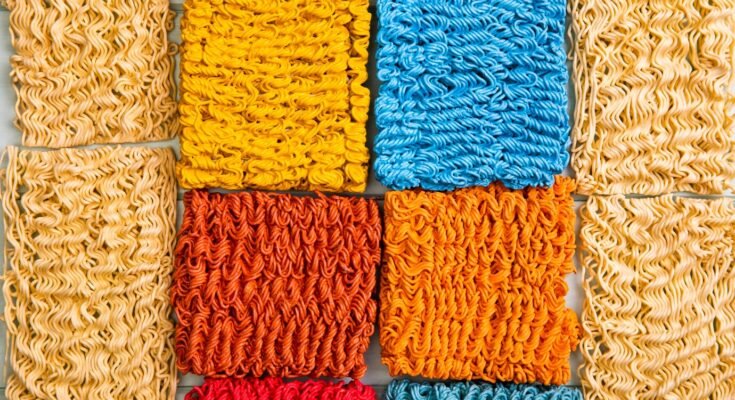Synthetic fibers transform the textile industry. These man-made materials offer the durability and flexibility that natural fibers often lack. Chemically engineered, synthetic fibers meet diverse needs, from fashion to industrial use. They resist wrinkles, stretch effectively, and feature unique properties. Let’s explore the benefits of synthetic fabrics and see why they lead in today’s market.
What Are Synthetic Fibers?
Synthetic fibers are man-made textiles created through chemical processes. Unlike natural fibers, which come from plants or animals. Synthetic fibers are produced from polymers, large molecules made up of repeating units.
These fibers are engineered to offer specific properties that can enhance their performance, durability, and versatility. They have revolutionized the textile industry. It provides alternatives that often surpass the capabilities of natural fibers.
What Are the Common Types of Synthetic Fibers?
Polyester, nylon, and spandex are common synthetic fibers. Polyester excels in durability and wrinkle resistance, which makes it ideal for a wide range of uses.
What Is Polyester and What Are Its Properties and Uses?
Polyester is one of the most widely used synthetic fibers due to its remarkable durability and versatility. It is known for its wrinkle resistance, which makes it a popular choice for clothing and home textiles.
Polyester also resists stretching and shrinking, which contributes to its longevity and ease of maintenance. Besides apparel, polyester is used in various industrial applications, which include upholstery, carpets, and even automotive materials. Its ability to retain shape and resist stains makes it a staple in both fashion and functional fabrics.
What Is Nylon and What Are Its Properties and Uses?
Nylon, introduced in the 1930s, is renowned for its strength and elasticity. This synthetic fiber is lightweight yet incredibly strong, which makes it ideal for a range of applications. Nylon’s resistance to abrasion and chemicals further enhances its utility. This is especially true in demanding environments.
It is commonly used in clothing such as stockings and swimwear, as well as in durable products like ropes, fishing lines, and industrial components. Nylon’s versatility extends to medical devices. Its strength and flexibility are advantageous.
What Is Rayon and What Are Its Properties and Uses?
Rayon, known as artificial silk, is a semi-synthetic fiber made from regenerated cellulose. This fiber feels luxurious like natural silk but is not entirely synthetic. It is valued for its softness, breathability, and drape.
People often use it for stylish clothing like dresses, blouses, and suits. Rayon also works well for linings and various home textiles. It looks and feels like natural fibers but is more affordable.
What Is Spandex and What Are Its Properties and Uses?
Spandex, also called Lycra or Elastane. It offers exceptional stretch. This fiber can extend up to seven times its original length and still return to its shape. Spandex is used in clothing that needs to fit snugly.
Spandex blends well with other fibers to enhance flexibility and comfort in activewear, swimwear, and form-fitting clothes. Its ability to stretch and recover transformed the fashion industry. It is especially in sports and performance wear.
What Is Acrylic and What Are Its Properties and Uses?
Acrylic fibers are lightweight, soft, and warm, resembling wool in texture. People use them often in cold-weather clothing like sweaters, hats, and scarves because they insulate well. Acrylic’s durability, flame resistance, and easy care make it useful for blankets, carpets, and upholstery. Its lower cost compared to natural wool makes it a popular choice.
What Is Microfiber and What Are Its Properties and Uses?
Microfiber consists of very fine fibers, less than 10 micrometers wide. It makes it highly absorbent and effective for cleaning. This fiber works well in cleaning cloths and wipes. It captures dirt and dust without leaving streaks or water marks.

Microfiber holds more liquid and dries quickly, which boosts its cleaning performance. Uses extend beyond cleaning to include clothing and filtration systems.
What Is Polyethylene and What Are Its Properties and Uses?
Polyethylene fibers have high strength and water resistance. These features make them ideal for outdoor furniture, camping gear, and waterproof clothing. Polyethylene’s durability helps it withstand harsh conditions.
The fiber’s adaptability and performance make it valuable in many industrial and consumer products.
What Are the Historical Milestones in the Development of Synthetic Fibers?
The development of synthetic fibers began in the early 20th century. In 1935, Nylon became the first synthetic fiber to be commercially produced. Shortly after, polyester and acrylic fibers were introduced, which revolutionized textiles. These milestones introduced a new phase in fabric production and innovation.
Who Were the Key Figures in the Invention of Synthetic Fibers?
Several key individuals advanced synthetic fibers. Wallace Carothers, a chemist at DuPont, invented nylon in the 1930s. Nylon introduced a new level of strength and elasticity to textiles.
Stephanie Kwolek created Kevlar in the 1960s, known for its strength and lightweight properties. Kevlar became famous for use in bulletproof vests and protective gear. These breakthroughs established the foundation for modern synthetic fibers and their many uses.
What Are Some Significant Technological Advancements in Synthetic Fibers?
Technological advancements drive the development of synthetic fibers. Nylon, invented in 1935, changed textiles with its strength and elasticity. Polyester, introduced in the 1940s, added wrinkle resistance and durability.
Spandex, developed in the 1950s, brought exceptional stretch and recovery. Kevlar, a recent innovation, is used in protective gear. Sustainable fibers, made from recycled or biodegradable materials, are shaping the future.
What Are the Benefits of Synthetic Fibers?
Synthetic fibers provide many advantages over natural ones. They offer greater durability, resist wrinkles, and are easy to care for. These fibers often outperform natural ones in resisting moisture, heat, and chemicals.
So—they also cost less, which makes production and consumer options more affordable. Versatile and high-performing, synthetic fibers are important in both everyday and specialized applications.
How Do Synthetic Fibers Compare to Natural Fibers?
Synthetic fibers offer many advantages over natural ones. They are more durable, resist wrinkles, and are easy to care for. These fibers handle moisture, heat, and chemicals better than natural fibers.
They are also more affordable, which reduces production costs and offers more budget-friendly options. Moreover, their versatility and high performance make them essential in both everyday and specialized uses.
What Are the Current Trends and Future Directions in Synthetic Fiber Research?
Synthetic fiber research keeps advancing, focusing on sustainability and innovation. Fibers made from recycled materials, like PET bottles. It can help you to reduce the environmental impact.
They explore biodegradable polymers to tackle waste and pollution. Innovations like nanoPE fabrics improve cooling and comfort. Future research will balance the benefits of synthetic fibers with environmental concerns, aiming for more eco-friendly solutions.
How Are Synthetic Fibers Used in Various Industries?
Synthetic fibers are essential in the textile and clothing industries. They appear in everyday apparel, activewear, and specialty garments due to their durability and performance. Polyester, nylon, and spandex often blend to make fabrics that offer strength, flexibility, and moisture management.
These fibers improve the functionality and lifespan of clothing, making them ideal for everything from casual wear to high-performance sports gear.
What Are the Uses of Synthetic Fibers in Industrial Applications?
Synthetic fibers are important in industrial applications due to their strength and versatility. They appear in products like ropes, insulation materials, and filtration systems. Nylon and polyester are often get used in parts that need durability and resistance to environmental factors. These fibers handle harsh conditions well and perform reliably. This makes them important in many industrial settings.
What Are the Uses of Synthetic Fibers in Medical Devices?
Synthetic fibers have important applications in the medical field. They are used in sutures, bandages, and implants due to their strength, flexibility, and biocompatibility. For instance, nylon sutures provide durability and resistance to bodily fluids, and polyester fibers are used in medical textiles.
These applications leverage the unique properties of synthetic fibers to improve your medical treatments and patient outcomes.
What Are the Environmental Impacts of Synthetic Fibers?
Synthetic fibers present environmental challenges. Their production uses a lot of energy and releases pollutants. Many synthetic fibers do not break down naturally, which causes long-term waste problems.
Microplastics from these textiles add to ocean and soil pollution. If you are taking these issues means focusing on reducing environmental impact and creating more eco-friendly materials.
What Are the Innovations in Sustainable Synthetic Fiber Production?
Researchers are developing sustainable synthetic fibers to address environmental concerns. They create fibers from recycled materials, like PET bottles, and use biodegradable polymers that break down more easily.
Therefore, advances in production cut energy use and reduce waste. These steps show a growing commitment to making synthetic fibers more eco-friendly and sustainable
Conclusion
Synthetic fibers have come a long way since their early days. They offer durability, versatility, and innovative applications. As technology advances, synthetic fabrics continue to evolve. Researchers focus on making these materials more sustainable and environmentally friendly. Innovations shape the future of textiles, which improves how we experience and use fabrics.
Curious about synthetic fabrics and their uses? Dive into our comprehensive resources. Learn how these materials can enhance your projects. Discover expert insights and practical applications. Reach out to us today to get started. Download our latest white papers for in-depth knowledge. Start your journey into the future of fabrics now!



